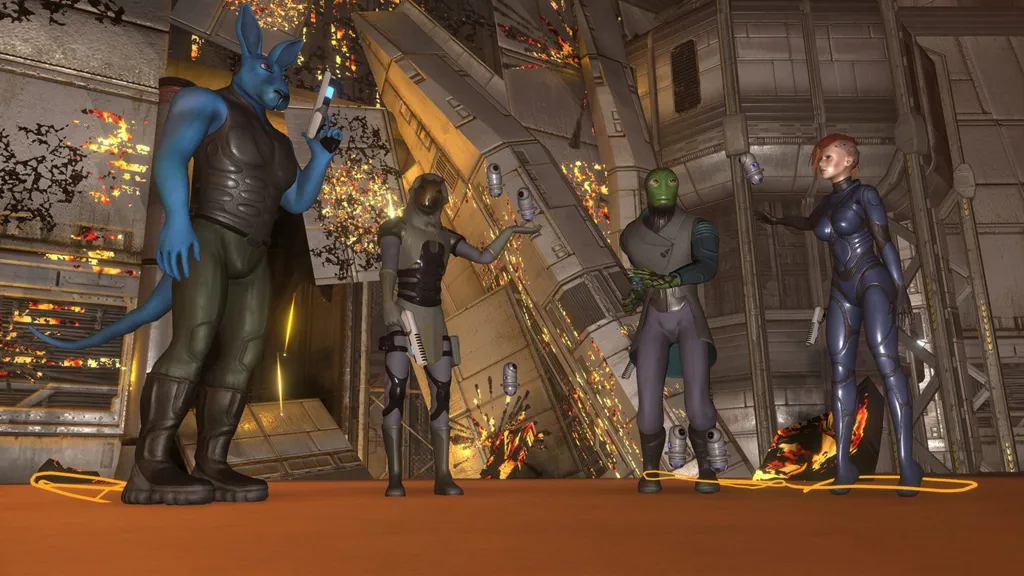Venice International Film Festival’s Venice VR Expanded is the first festival to feature multiple live immersive theatre productions in competition, with production teams joining remotely from around the world. This is the fourth year that Programmers Liz Rosenthal and Michel Reilhac have integrated groundbreaking works with VR and live actors who until this year, have been in the same physical space as festival attendees.
The three VR productions with live theatre varied dramatically between each other. La Comédie Virtuelle invited visitors to explore a theatre with live dancers in avatars ranging from dancing donuts to dancing mannequins. Finding Pandora X had players help the remaining Gods of Mount Olympus recover the box of hope that Pandora removed. And The MetaMovie Presents: Alien Rescue allowed audience members to play a character hired by a team of alien-rights activists to help them rescue a rare and dangerous creature from captivity.
But what they all have in common is that their different approaches to immersing audiences in real-time stories are essential to celebrate and showcase, as this form of storytelling is becoming increasingly important. I stepped into all three productions and connected with their creators to learn more about their storytelling strategies.
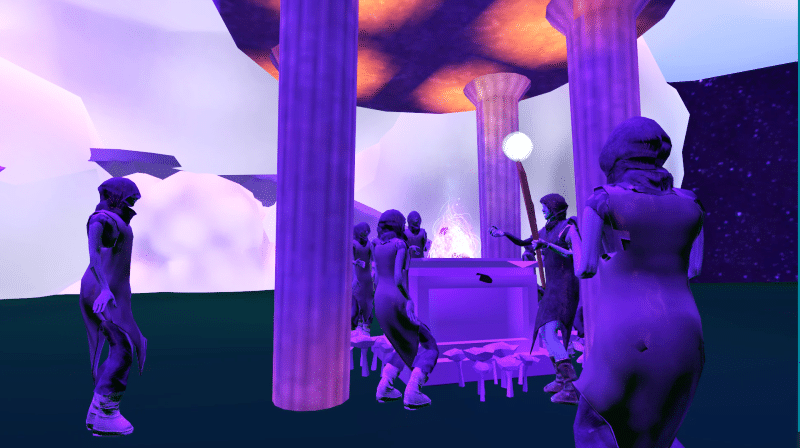
Help Players Become Part of The Performance
Kiira Benzing directed Finding Pandora X, which was awarded Venice VR Expanded “Best VR Immersive User Experience” this year. This is a major achievement, especially considering the dramatically increased complexity of creating a live immersive production. The production cleverly integrates players into a collective Greek Chorus, while actors see, speak and collaborate with them both as a group and individually throughout the story. Interactions with the characters and other players that we were all in the adventure with, did wonders for reinforcing the illusion of presence in it.
The action and dialogue moved at a pace that allowed for all players to feel as if they were actively playing an important role, while also avoiding moments where a player could try to be disruptive. Puzzles in the narrative also move it forward. Benzing explains that “it’s a balance of being respectful to the actors to hear their dialogue, while also feeling the freedom to contribute your own voice when encouraged by the performers[…]I think that giving voice to something and being empowered to speak in key moments is an unusual surprise.” Giving players the ability to speak allows them to meaningfully contribute to the story. “Every audience is different and collectively they take on a shape together as an ensemble. I love to hear how they want to problem solve and I hope that some of them will form a social bond and make new connections from being a part of the Greek Chorus in our show.”
There are of course risks with allowing players mics to remain open in some cases, such as with larger groups. Avinash Changa from The MetaMovie Presents: Alien Rescue’s co-production company WeMakeVR explains that during Venice VR Expanded, they integrated fifteen players in one showing. Fourteen of them join as Eyebots. “ Some guests can have a lot of background-noise, which can negatively impact the experience for other guests. But, there is also a great dynamic created when the Eyebots cannot talk. They come up with various creative ways to communicate and collaborate with the Hero.”
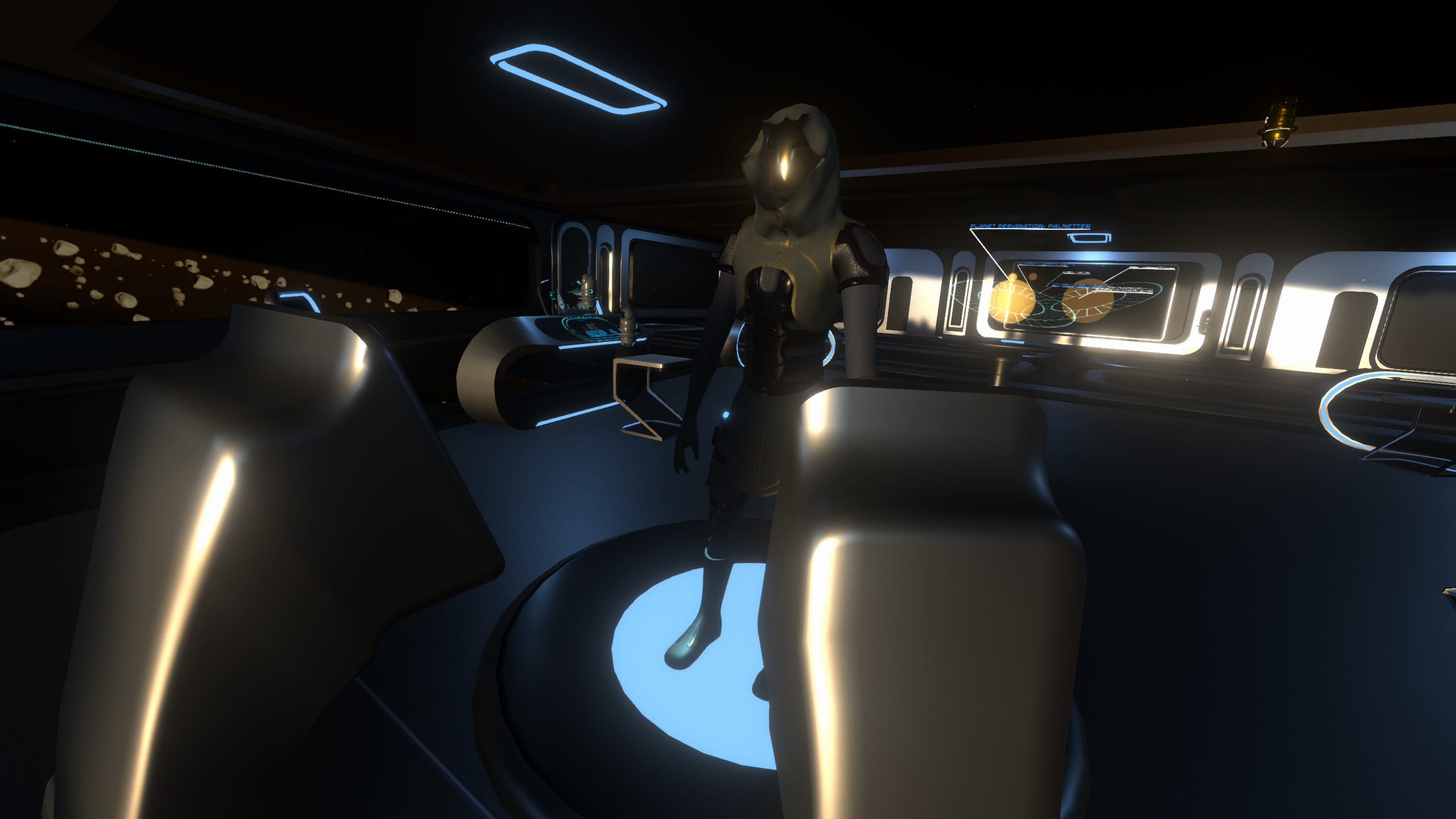
Meet New Heroes
Brave live immersive theatre productions can prepare to host a completely new hero character with each performance, allowing players to define their backstory and react as they choose, along with the live actors. In The MetaMovie Presents: Alien Rescue, this is currently offered up to one lucky hero player. Changa explains that what this risk requires is for the production team to rapidly get to know the player from the moment they enter the environment. “What’s fascinating is that even though many of our audiences have no experience with role-playing, everyone can do it instinctively […]. So often it’s just a question of giving someone some positive reinforcement so they know it’s ok.”
But risk still exists. A designated hero can encounter stagefright, motion-sick or even technical issues. To help to reduce this risk further, Changa shares that they’ve developed “a process of checks that start from the moment the guest gets a ticket…” to “a few brief checks when the Hero arrives into the virtual world.” I feel that it is essential for our industry to keep taking risks, and there are other safety measures that can be considered when offering such open roles like this, such as before the play begins, and with tricks that actors and the behind-the-scenes team can employ. Magicians, comedians and more know the value and tricks for integrating the audience into their never-the-same-twice shows.

Create Guardrails for Play
The MetaMovie Presents: Alien Rescue director Jason Moore is careful to integrate tactics that guide people through the story, without disturbing the nature of agency inside the experience. He explains “We want them to follow the story, and we do use characters like Elbee to guide them in the really large maps like the massive Blackhawk Spaceship (two hundred meters long with four levels) and if you stick close to the Hero and other characters you’ll always be in the center of the action. But hey, if you want to go off and explore on your own, that’s fine too. And if you get lost along the way, we’ll lead you back to the action, but it’s really up to each audience member.”
Gilles Jobin, director of La Comedie Virtuelle: Live Show, encourages guests to go absolutely anywhere they please in the space. They even have a map that allows visitors to jump from room to room if they prefer not to walk. Instead of limiting where guests can go, he chose to “make them invisible when they reach the performing space of the dancers [to] not disturb the experience of other users.” This also gave me the confidence to dance even more freely with the live dancers and dancing objects.
Benzing and her team chose to lift the guardrails further, at the end of the experience. And for good reason, the guardrails were lifted when players were taught how to fly around the large environment. It was a finale to the narrative and experience, with a power that many players would not want to play with for just a short moment in time.
Have a Story-Based Reason for Every Element
Magic is in the details, and the award-winning Finding Pandora X team provided thoughtful integrations of story elements into how players interact with the environment. For example, with the experiences’ branching narrative, players have the choice to split up to visit different worlds. To get there, portals are required. However, the portals didn’t just appear with no context. Their appearance and how they were summoned by a live actor with song, masked the technological need for portals to jump to different spaces, making it feel more seamless and entertaining. And when players are given the opportunity to fly, instead of breaking the narrative with instructions on which button to press to fly, Zeus shows players how to fly with their arms, using a mechanism that feels more natural and akin to how a child would fly during imaginative play.
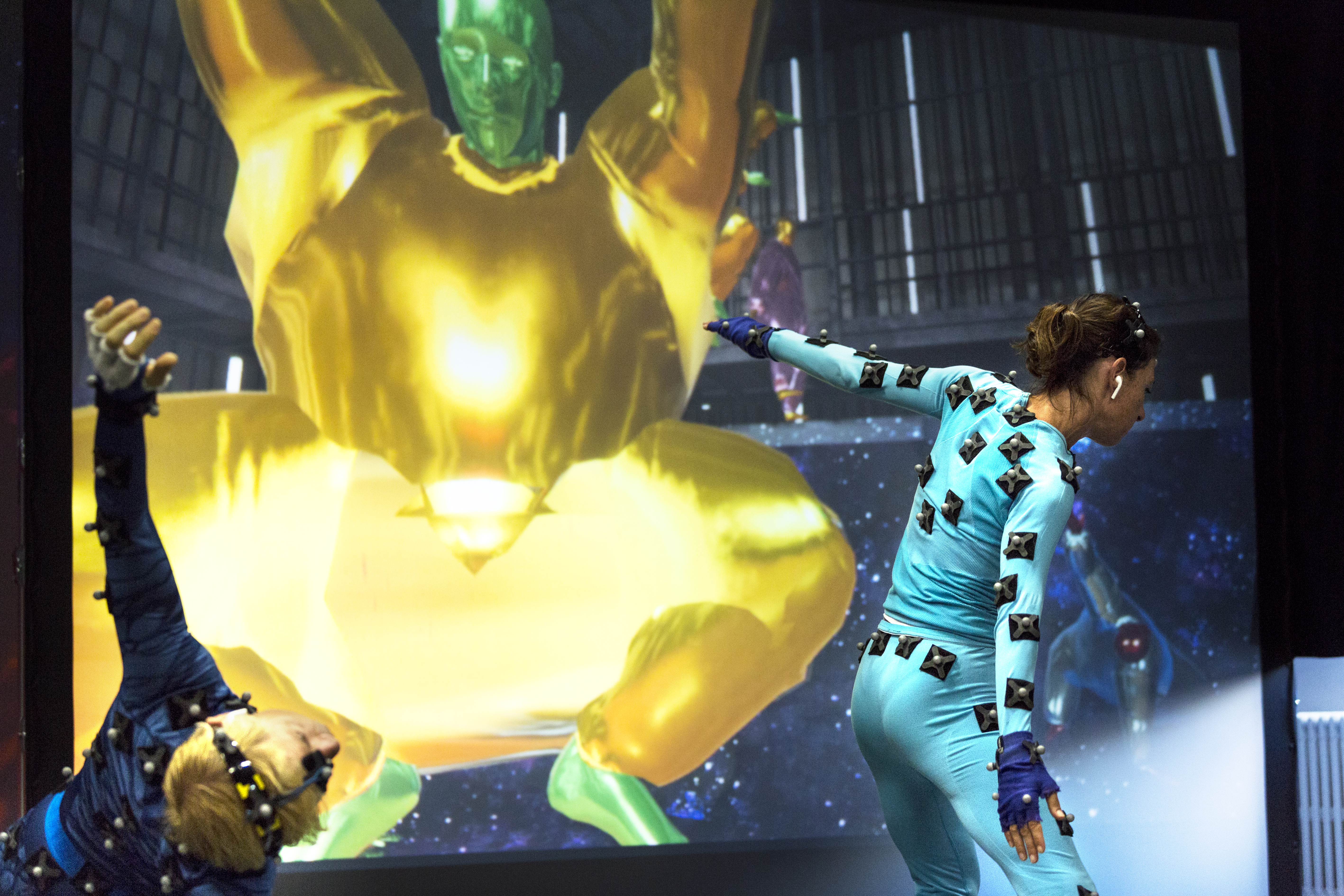
Choose The Right Performance Venues
Virtual performance venues are becoming increasingly accessible from people’s homes.
Rosenthal highlights that consumer adoption of social VR has recently accelerated. Where social VR platforms were once considered to be tailored to a niche subculture, she explains that we’re now seeing these and new platforms being used by wider audiences. In fact, with her team’s collaboration with VRrOOm, all of VR island, down to the ability to take a gondola ride to get there, was recreated in VRChat for curated projects to showcase, and accredited industry leaders to network and celebrate.
As businesses and even location-based entertainment companies adopt social and collaborative immersive spaces as a solution to connect with their employees and audiences due to the pandemic, live performances in VR are an important topic to both save and inspire new businesses and experiences.
Just like traditional shows are best consumed on different platforms, like broadcast TV, Netflix or YouTube, so are live immersive experiences. The story vision should drive the decision making around which platform(s) are most appropriate. For Finding Pandora X, VRChat provided the team with what they needed to create detailed custom story worlds and avatars, while also being able to reach a wide audience of VR headset users. For The MetaMovie Presents: Alien Rescue, the team selected Neos because of the ability to allow them to collaborate in real-time inside Neos to create the very high degree of detail for their world-building, such as their lighting, textures, motion and more. And for La Comedie Virtuelle: Live Show… they created their own platform solution to bring their vision to life, allowing live mocap dancers from around the world to join the same space. Jobin explains that during Venice VR Expanded, their setup connected 3 mocap spaces at the same time from his studio in Geneva, as well as Bangalore and Sidney.
While Benzing selected VRChat for the premiere of Finding Pandora X, her productions are designed knowing that it can be valuable to tour them across different performance venues. She explains: “I think of our productions like a moving troupe, and with the right infrastructure and support … we could certainly run our production across other places.” Benzing is a trailblazer for immersive theatre and has in fact designed an immersive performance for two venues at once, with Loveseat – her first innovative theatre experience selected by Venice Film Festival in 2019. It played to two audiences simultaneously – a live audience in Venice (in the real, physical world) and a virtual audience in Social VR. “I love this format” she explains “because I have an interest in bringing the live and virtual audiences closer together. But [this year] we had to eliminate the live element due to the pandemic. Focusing on just the Virtual audience has enabled us to go deeper into more immersive elements and take risks with trickier story elements during a live show by branching our narrative and running two interactive quests which play a bit like an escape room.”
Between fully real and virtual worlds lives an array of additional options for live theatre. Changa explains that soon MetaMovie-experiences will “have options to actually get dozens, and later hundreds of guests” into them, with developments that will “blur the lines between gaming, cinema and immersive experiences into something very new.” Our vision is to offer experiences suited for smaller groups, as well as ones that are created specifically for larger audiences, varying in the narrative through to levels of interactivity.
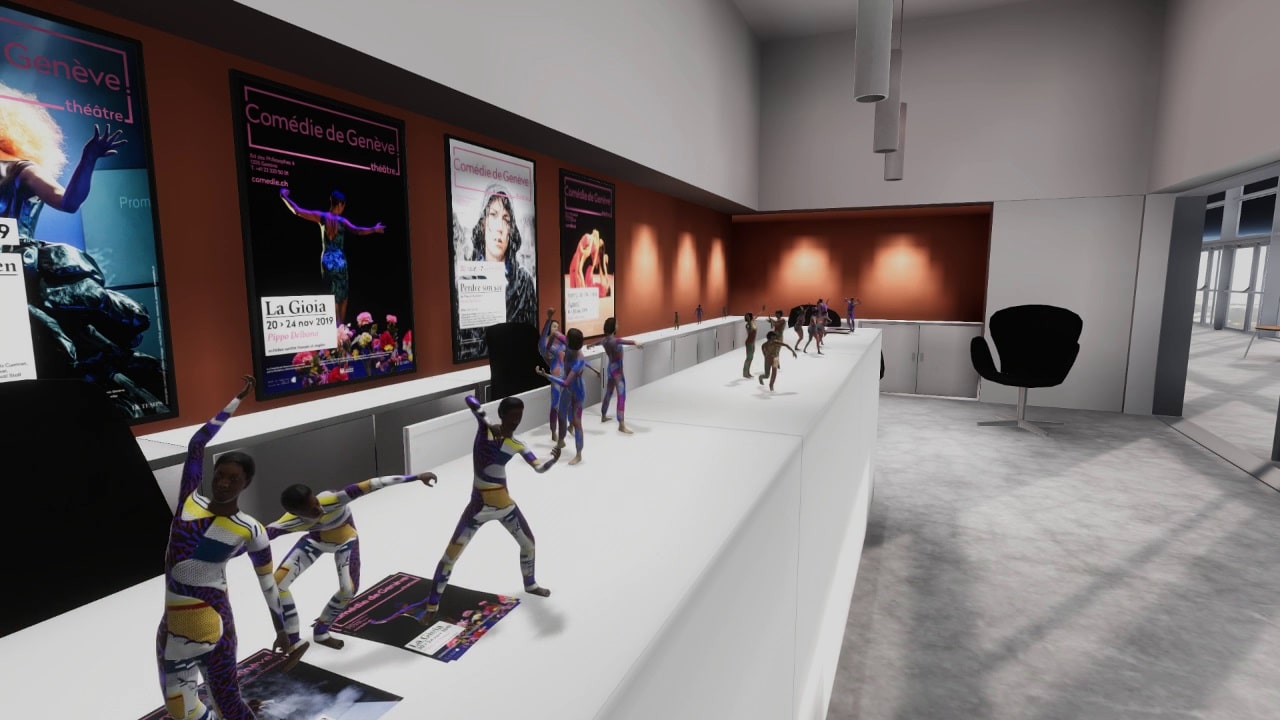
Offer Different Ticketing Options
In stories, there are starring and supporting roles. Each character is awarded different perspectives and opportunities. Where there is variance in the immersive theatre experience, it offers reason for players to return to try out different roles. And, it offers studios an opportunity to sell players different ticketing options. They can vary by character, timeslot, and even packaged deals.
Changa shares that when The MetaMovie Presents: Alien Rescue releases this December, they will have “various tickets with the Hero-role being a more premium tier, and less interactive roles being lower priced. There are various other models that will be released in stages after the initial launch.”
In addition to ticket options that vary by the type or quantity of experiences that a player can purchase, there are add-ons that can be offered. As a member of the Greek Chorus in Finding Pandora X, my VRChat avatar received a cloak to wear before the play began. Not only did it get all players into an appropriate look for the show. But,that cloak is now a look that I’ve kept that I can put on my avatar even after the show. Offering players digital take-aways like this is a value-add. Plus, I saw many others exploring the visual Venice VR Expanded world wearing their cloaks which became a subtle promotion for the production.
There are many other options for ticket add-ons that can be offered. And, there are options to incent people to visit the theatre space to then trade-up to purchase a performance ticket. Jobin and his team have the theatre space open for anyone to visit at any time, even when the live dancers are not performing in La Comedie Virtuelle: Live Show. He shared that they noticed that when the show was not on, some visitors “were playing hide and seek in the virtual theatre.” With beautiful environments that encourage exploration, there could be an opportunity to employ this up-sell tactic.
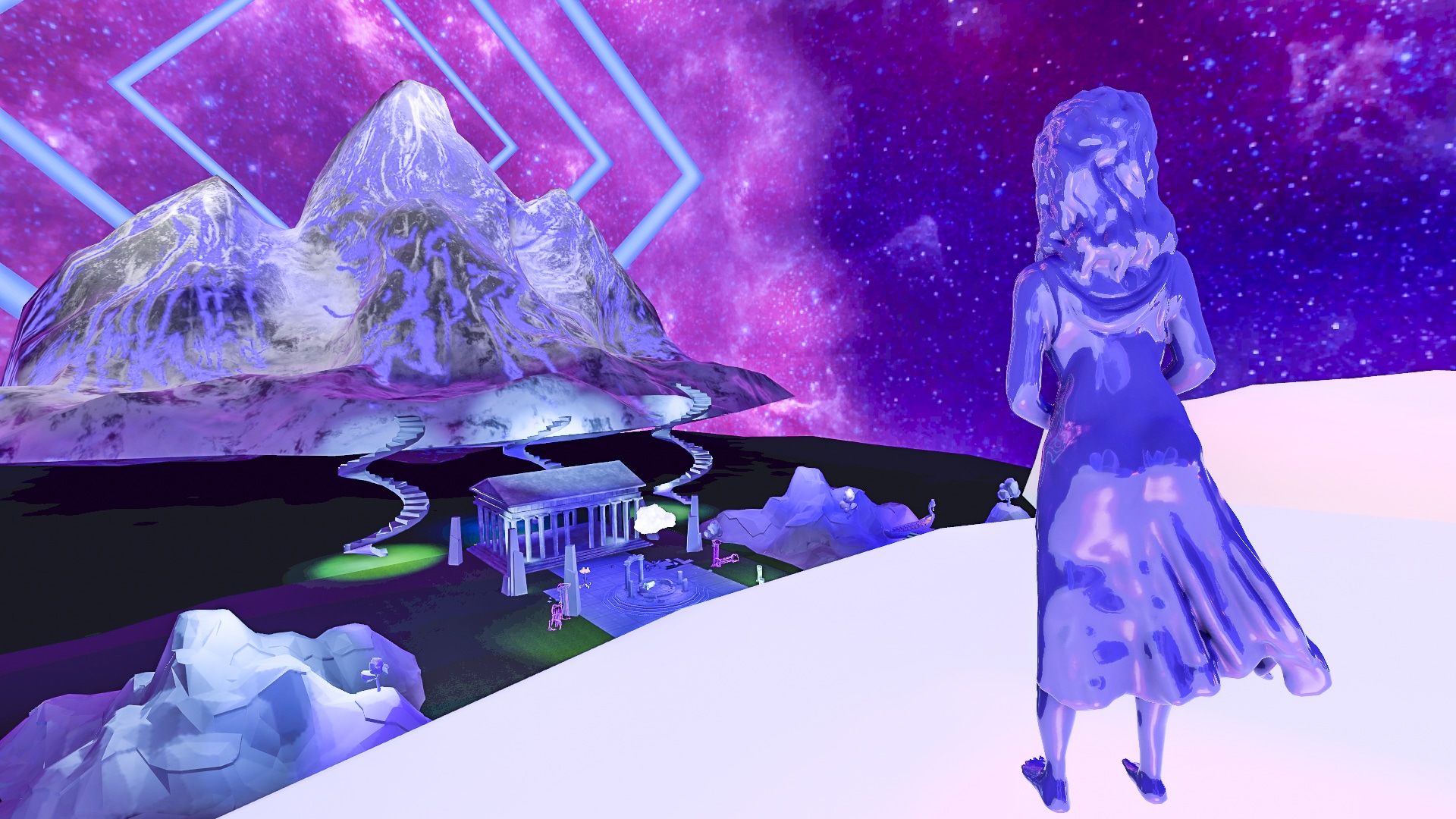
Uncover Audience Insights Unlike Any Other Entertainment Experience
Benzing takes the time to observe the Finding Pandora X production every day from a few perspectives, with the ability to watch from nearly anywhere in Mount Olympus – the environment of the show. And she is observing while actively playing a role in the magic. “In this show” she explains, “ I have been running the lights and sound and this enables me to have a close eye on every detail in the world and make sure the scenes are being heightened by the theatrical design.” By doing this, Benzing learns how players are interacting with the story world, and each other, such as “how they teach each other skills or pass each other an interactive prop in the show. The body language has been beautiful to observe…
Zeus has a scene where he gets proposals from the Greek Chorus. Watching him cleverly respond to each audience member’s suggestion always makes me laugh.”
This level of intimate real-time observation is possible from the perspective of cast members, through to the silent observers in the immersive theatre productions. During showtime, plays can even integrate small tests around changes in the scenes, to see how it impacts their guests.
Social VR platforms, or maybe even companies behind top game-engines, can consider offering more tools for their users to build their own live immersive theatre. And the platforms can, in turn, learn more about what different audiences want to experience in VR and beyond. After all, we are already stepping into our fun avatars to enter a range of unreal social VR environments. Soon, we will also be interacting with trained AI-characters in immersive plays. As Shakespeare wrote, “All the world’s a stage, And all the men and women merely players.” The metaverse is very much a part of our world now.

